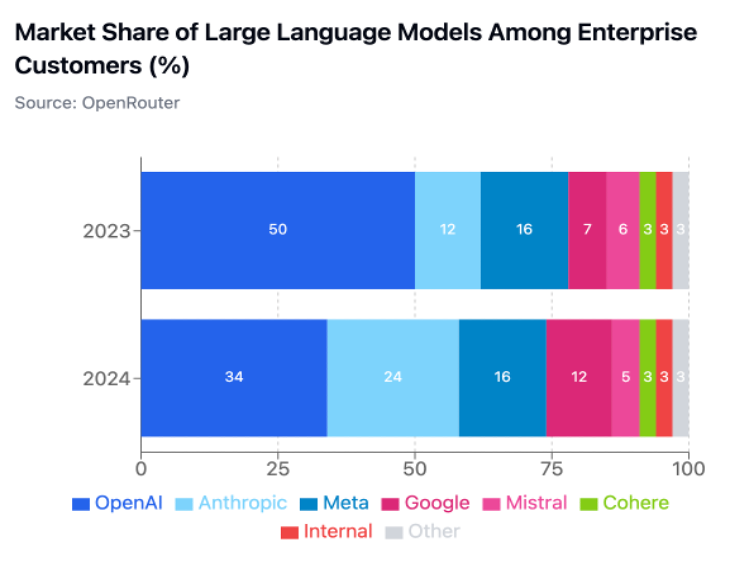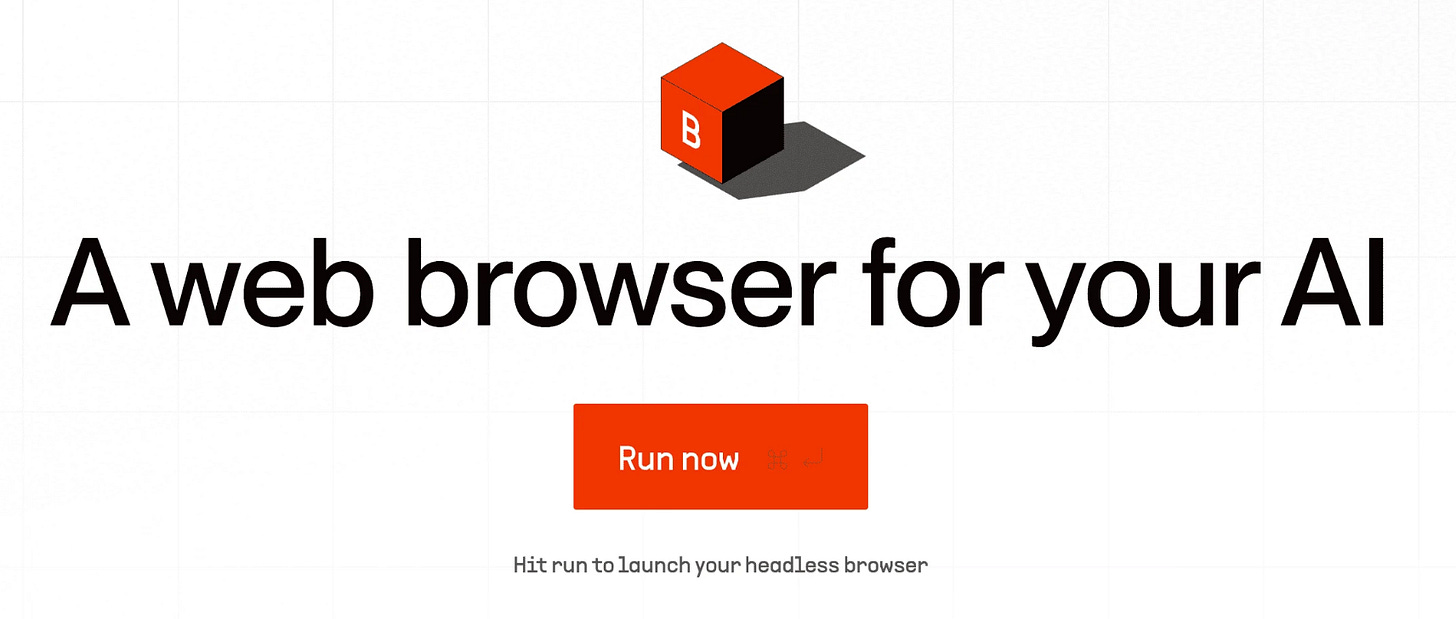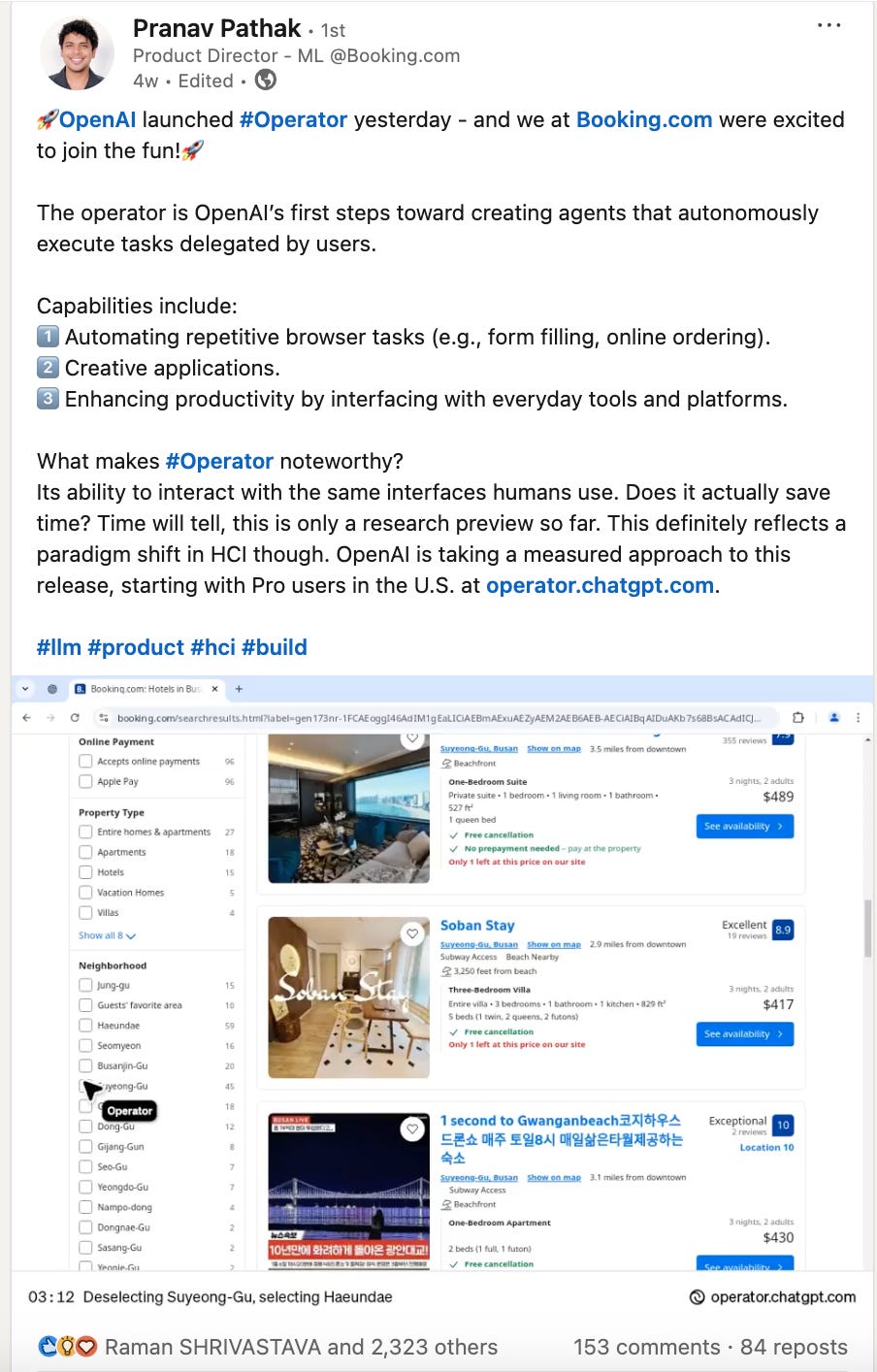From Models to AI Agents: The Rise of Autonomous and Agentic Data
The rise of browser-based AI agents: automating the web and actions based on data
In 2024, AI development saw a tug-of-war between premium and open-source models. Industry leaders like OpenAI, Anthropic, and Meta all rushed to build bigger models with more compute. The cost to achieve a given level of AI capability falls 10X every 12 months, even as model sizes grow ever more massive. Today, we see a split between premium, huge models that do extensive research and cheaper open-source models. Both approaches can succeed – much like how iOS became a premium ecosystem while Android won broad market share. In 2024, both premium players (e.g. Anthropic) and open-source entrants (Meta, Google) gained ground in different areas.
State of Models: ↑ Compute + ↑ Data = Bigger, Better Models but also Open-Source shines with data tasks
Different models now excel at different use cases. For example, Anthropic’s Claude dominates AI coding tasks as the default model for Cursor due to its superior reasoning and larger code context window. On the other hand, at Databricks about ~75% of model usage is on small open-source models, which have become “good enough” for many enterprise tasks. This competitive dynamic is exemplified by Sam Altman’s observation that: “We will produce better models, but we will maintain less of a lead than we did in previous years.”
Open-source progress has been so rapid that many (including Databricks CEO Ali Ghodsi) are joking that “everyone’s model is open source; they just don’t know it yet.” In 2025 and beyond, we will continue to see compute availability driving architecture decisions at the model layer: does a given query require the absolute best (and most expensive) model, or can it be handled by a cheaper open-source model?
“The AI future will not be defined by a single monolithic model serving all needs but by thousands of specialized models working in concert - sophisticated “systems of agents” collaborating to solve complex challenges. This is precisely the world Databricks is building for - one where the primary advantage lies not in developing cutting-edge AI but in orchestrating it effectively at enterprise scale.”
– Ali Ghodsi, Databricks
In the realm of giant models (“big model land”), developers will keep throwing more compute at training. However, this strategy faces diminishing returns – as Sam Altman notes, the intelligence of a model grows roughly with the log of the training compute, data, and inference resources used. In other words, simply scaling up data and parameters yields ever smaller gains, especially as we are “running out of high-quality internet data” and hit hardware limits. While large models are approaching these limits, massive investment is now shifting to new frontiers in AI to drive additional performance – namely agentic data. Data is becoming increasing autonomous with AI agents.
Definition – Agentic Data: Data that is autonomously processed, analyzed, and acted upon by AI agents capable of reasoning, decision-making, and iterative learning without human intervention. Agents are most valuable in scenarios where humans are drowning in data and unable to take enough action – for example, labeling huge datasets or monitoring the firehose of security logs and events.
From Models to Agents – The Rise of AI That Thinks, Acts, and Iterates on Data (“Autonomous Data”)
Models: Limited to training data, one-off predictions. Text <> output interface.
Agents: Use tools/apps for real-time data, manage ongoing tasks, and continuously adapt to user needs. Text <> action interface.
Traditional AI models have been limited to their training data and one-off predictions – essentially functioning as static tools with a simple text → output interface. Agents, on the other hand, can use tools and apps to fetch real-time data, manage ongoing tasks, and continuously adapt to user needs – a text → action interface. This represents a new paradigm: for years, models acted as fixed predictors (you provide input text and they give output), but now agents can dynamically interact with the world. They fetch live information, perform sequences of actions, evaluate outcomes, and iterate – leading to a massive shift in how AI systems operate.
For instance, this shift to agentic AI is already driving real-world impact. The ability for AI to test and iterate autonomously was a key differentiator behind AI’s first killer app – GitHub Copilot in 2021 (a full year before ChatGPT). AI coding assistants have now become indispensable, collectively writing over 40% of new code at Meta and Google. Sam Altman even predicts that an AI will be the world’s the #1 competitive programmer this year. These developments set the stage for our exploration of agentic data: how agents are transforming data-centric workflows and what it means for the future of data infrastructure.
AI Agents After Code: The Browser Frontier (2025–Future)
AI agents are now rapidly expanding beyond coding into general computer use, with the web browser as a key battleground. In fact, the same week that DeepSeek launched its cutting-edge open-source model, OpenAI quietly released the first mass-adoption agent (Deep Research) and introduced the first browser-based agent interface (Operator.). By giving AI agents access to our everyday web browser, we unlock massive new automation potential:
“We weren’t born to browse the web. We were born to be curious, create, and connect. Agents are simply the next leap—another level of abstraction that lets us focus on what matters.” -- Manosai Eerabathini, Product Manager at Figma
Agents integrated with the browser enable AI to perform data analysis and tool use that previously required human clicks and queries. Notably, Browserbase (which specializes in browser automation via agents) and CrewAI (which focuses on agents for tool use and workflows) are gaining adoption as early examples of AI agents outside OpenAI’s Operator.
With OpenAI’s Operator, the browser becomes a new frontier for real-time data collection and action. Deep Research (OpenAI’s research agent) has exploded in popularity, bringing the same “magic” we’ve seen in coding assistants to any field dependent on intensive search and analysis. The Deep Research agent can autonomously search across 100+ websites and assemble contextual information in real time – essentially a super-powered combination of retrieval-augmented generation and Google Search, as if one could dedicate dozens of expert hours to every query. It’s insanely good at information gathering and synthesis.
Source: Pranav, Director of ML at Booking [link]
OpenAI’s Operator showcases how AI agents can take over the browser to perform complex tasks end-to-end. This ranges from simple consumer uses (imagine an agent that can navigate Booking.com or Airbnb to plan your trip automatically, this is live today [link]) to sophisticated enterprise workflows (e.g. AI-powered sales and customer service agents working through web interfaces). Unlike brittle, static if-this-then-that scripts or RPA workflows, these AI agents can act and react in real time, seamlessly integrating with existing web applications on a user’s computer. This heralds a new era of “local process automation” – dynamic, smart automation that adapts on the fly as tasks unfold, rather than following a rigid script.
As the cost of “intelligence” continues to decline, AI is moving from static tools to dynamic systems of agents that can reason, plan, act, and test. This pattern mirrors past technology shifts: when a core tech becomes commoditized, value moves up the stack. (For example, cheap cloud infrastructure from AWS enabled a wave of SaaS companies to capture value on top of it). We are seeing the same with AI – the biggest opportunities are less about building ever-bigger foundation models, and more about building the infrastructure, middleware, and orchestration layers that make these multi-agent systems truly effective. In other words, if many AI models become readily available, the differentiator will be how well one can coordinate and apply those models via agents.








Great breakdown! I recently analyzed 385 AI agent companies, and a key takeaway is that most are copilots, not fully autonomous, with the strongest adoption in sales, workflows, and support. Shared my full insights here: https://aginfers.substack.com/p/insights-from-analyzing-385-ai-agents —would love your thoughts!